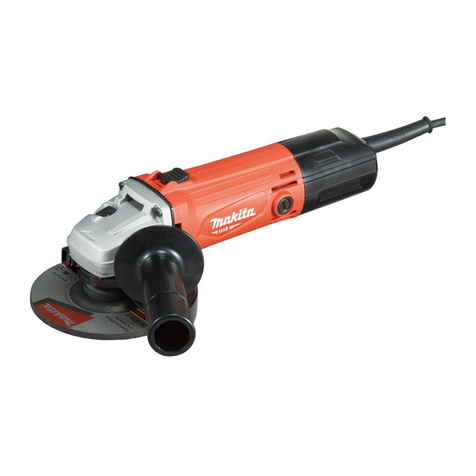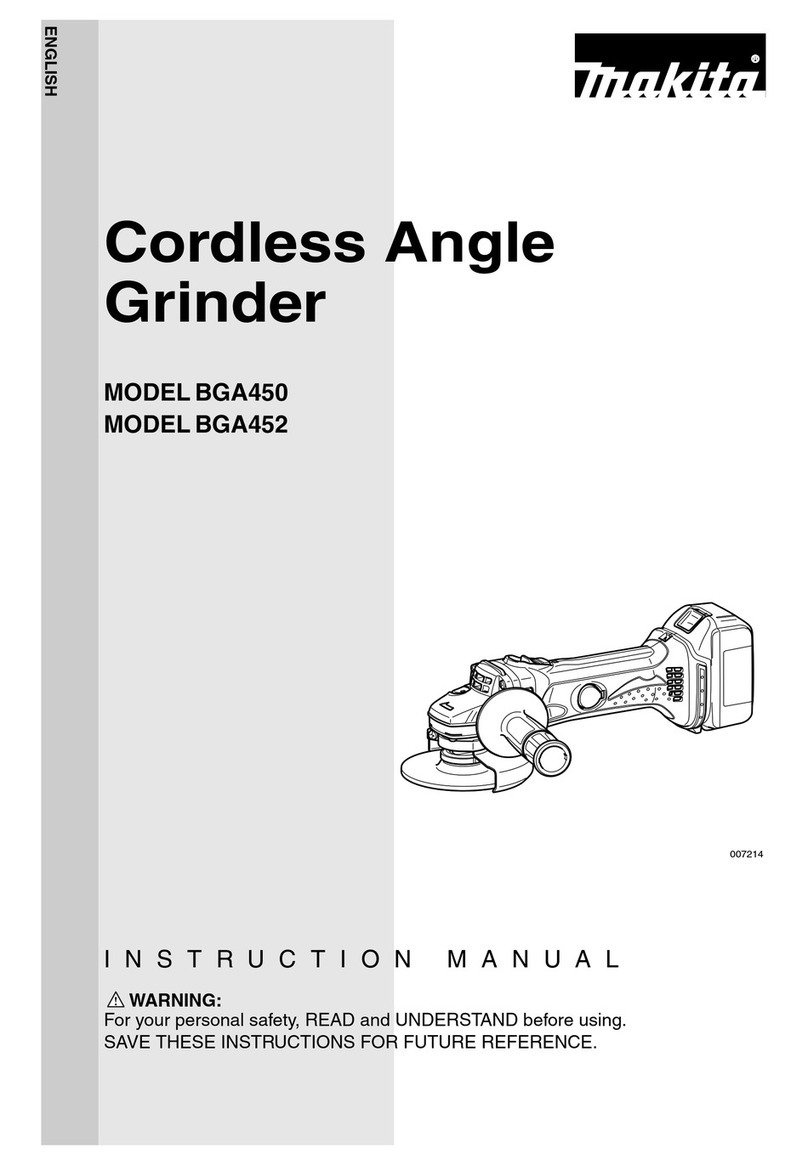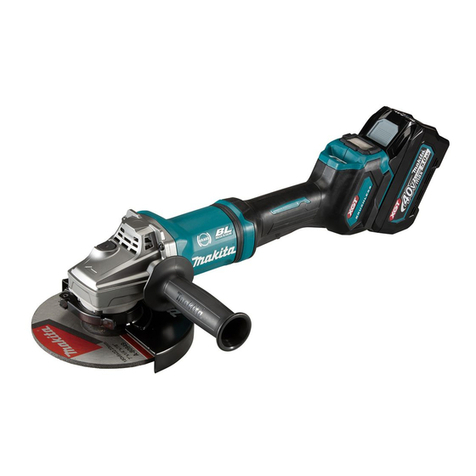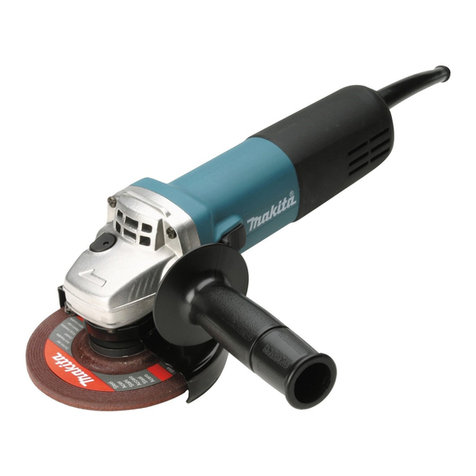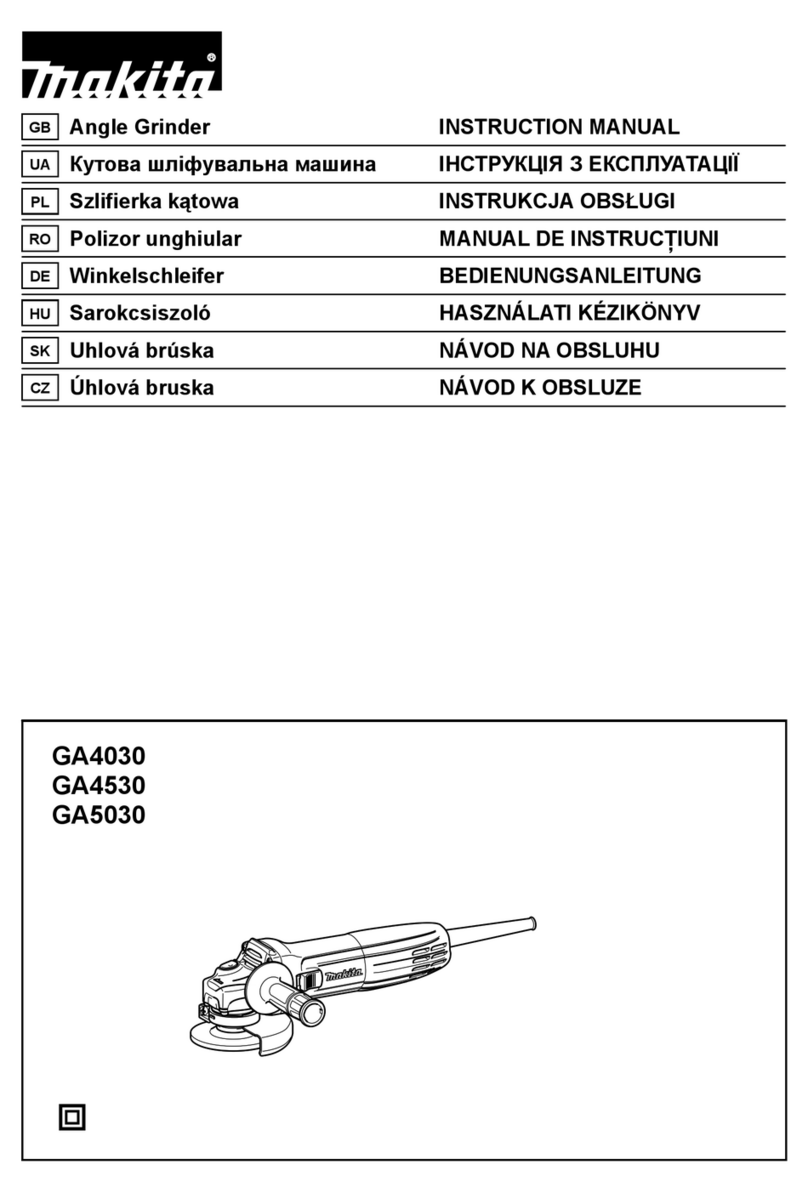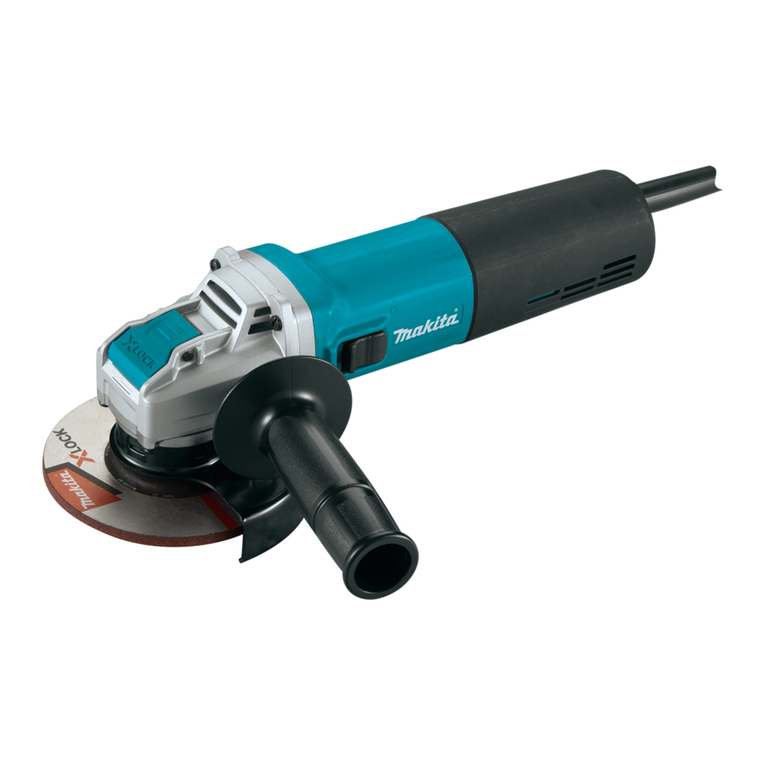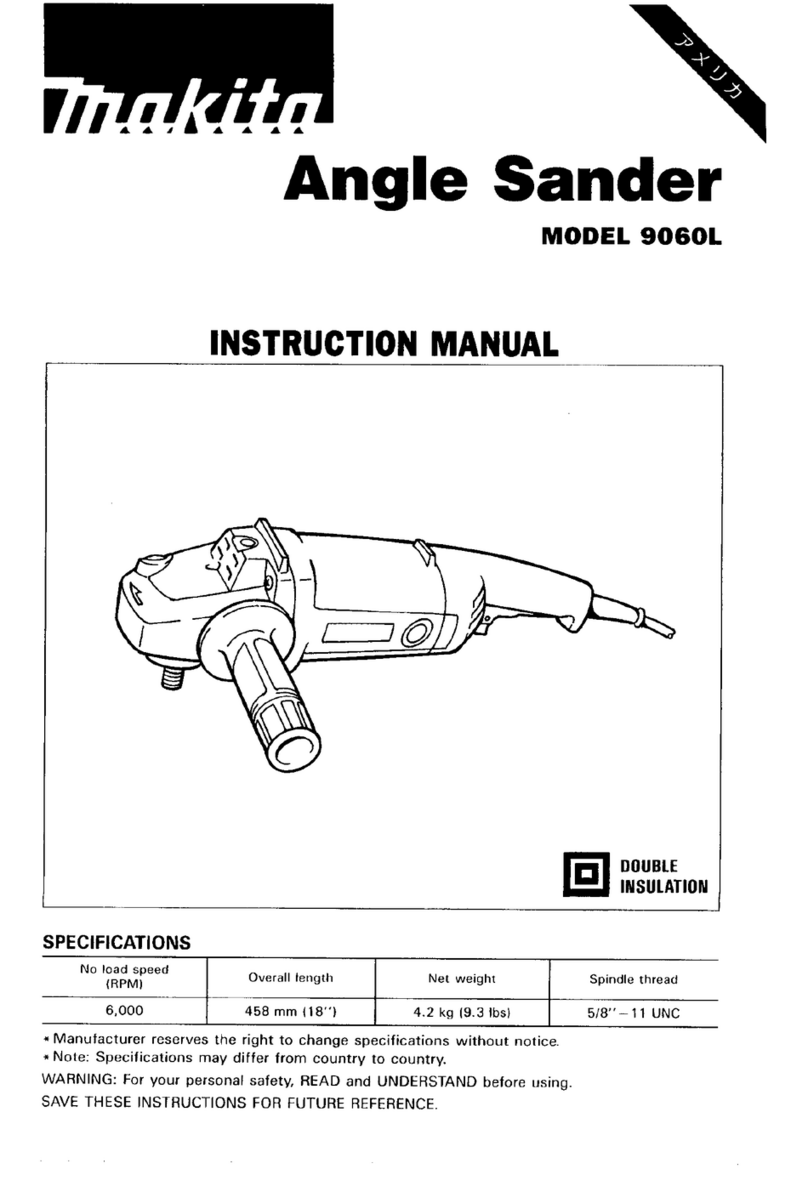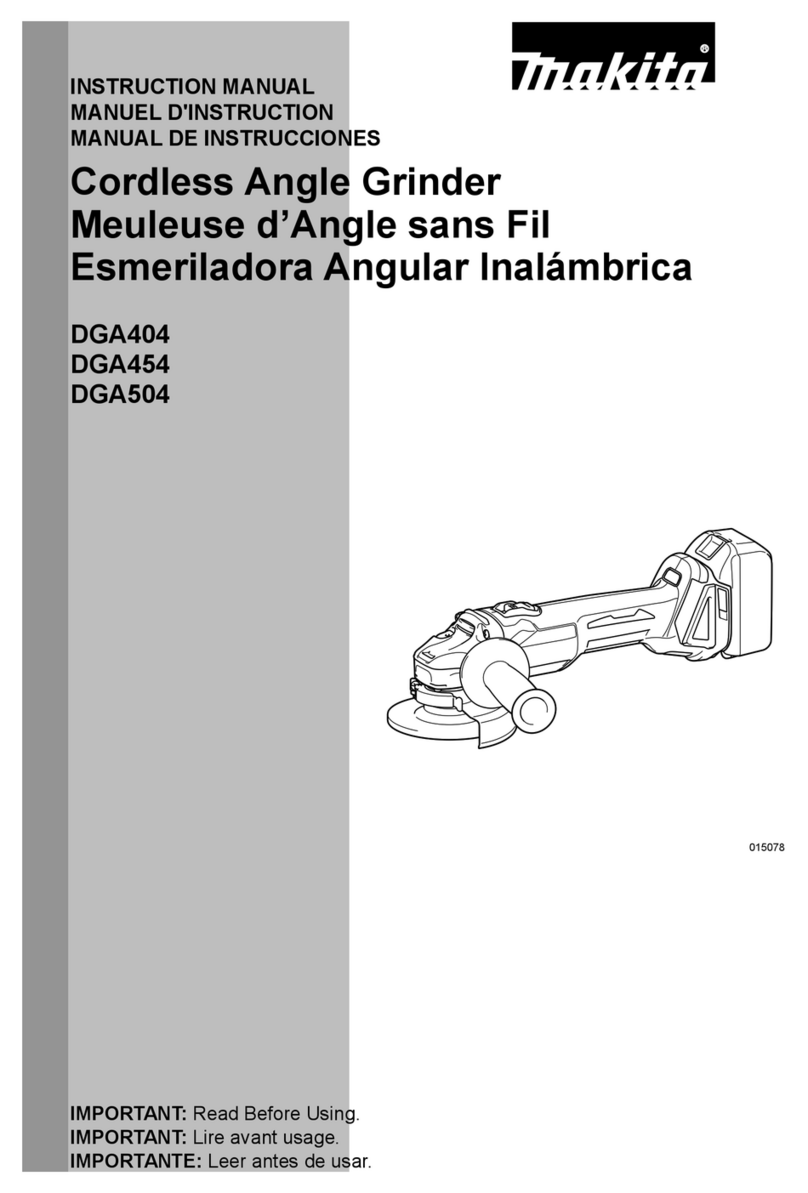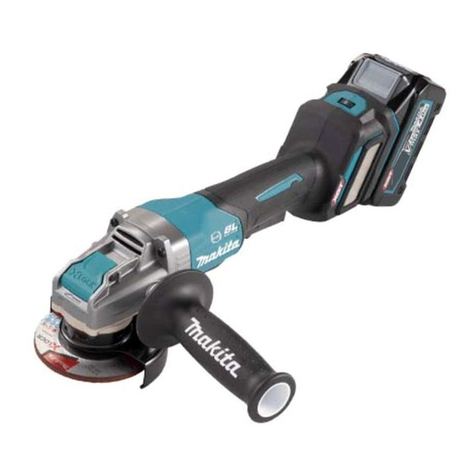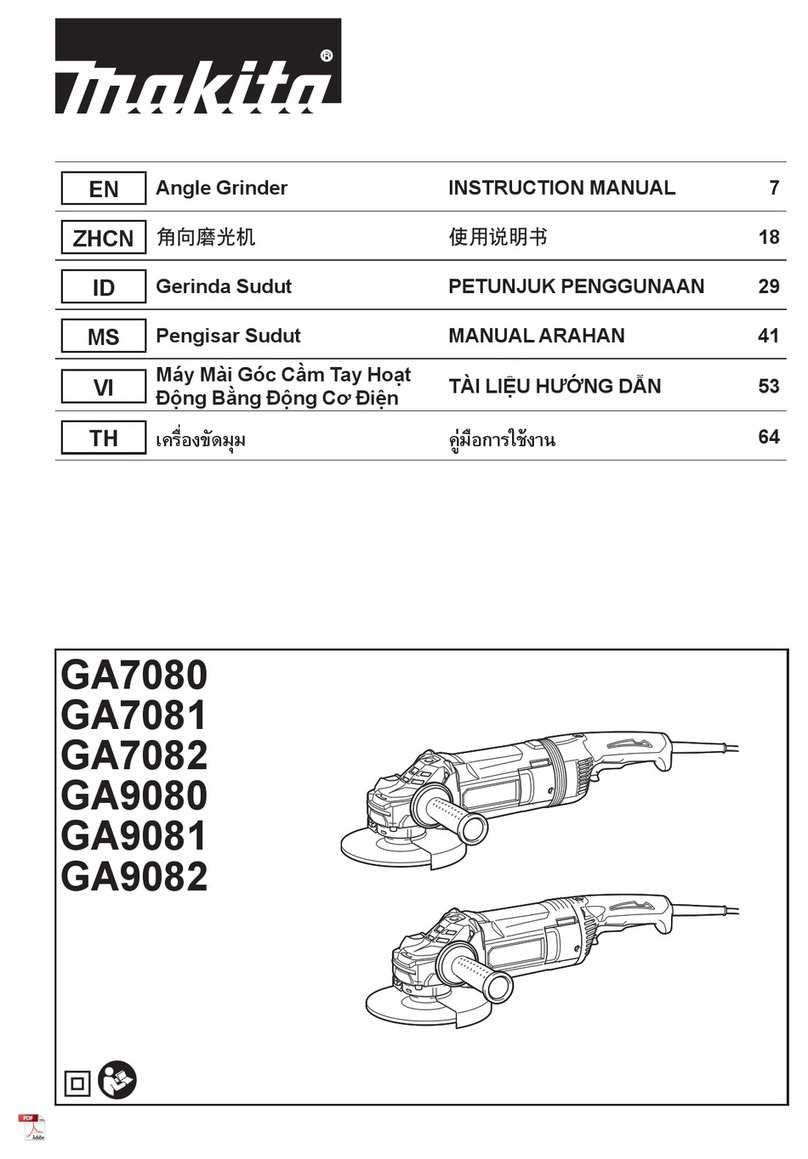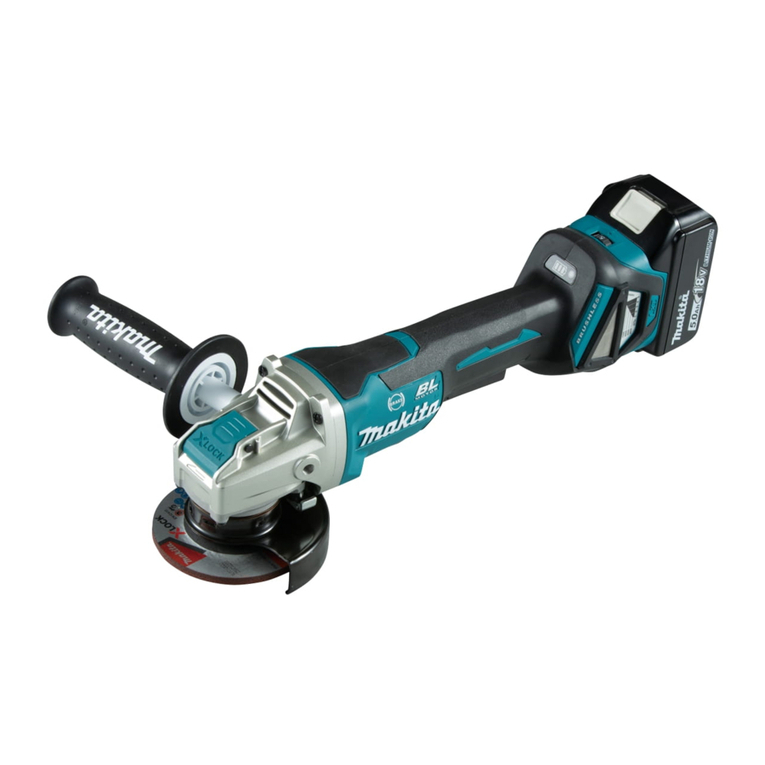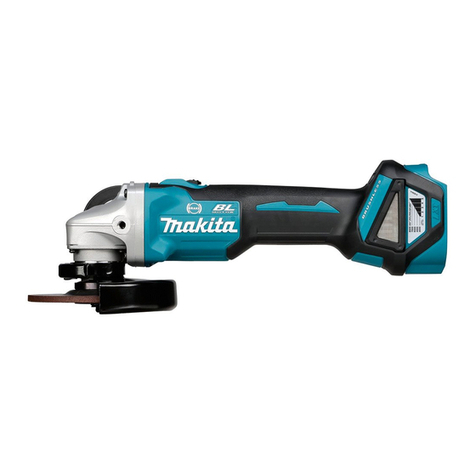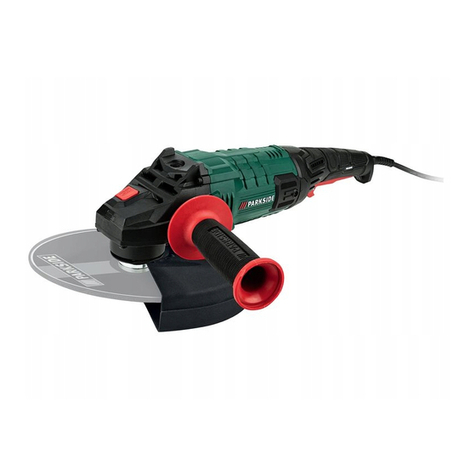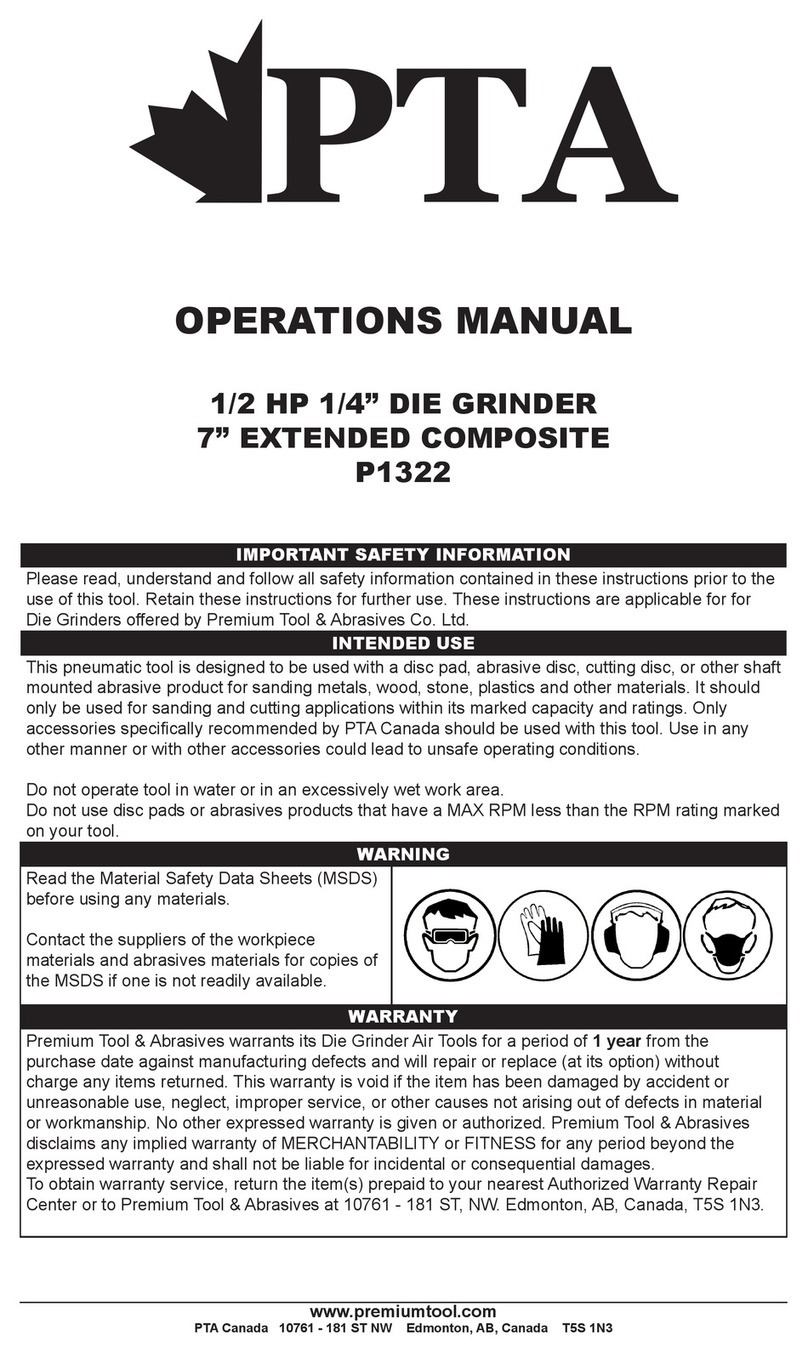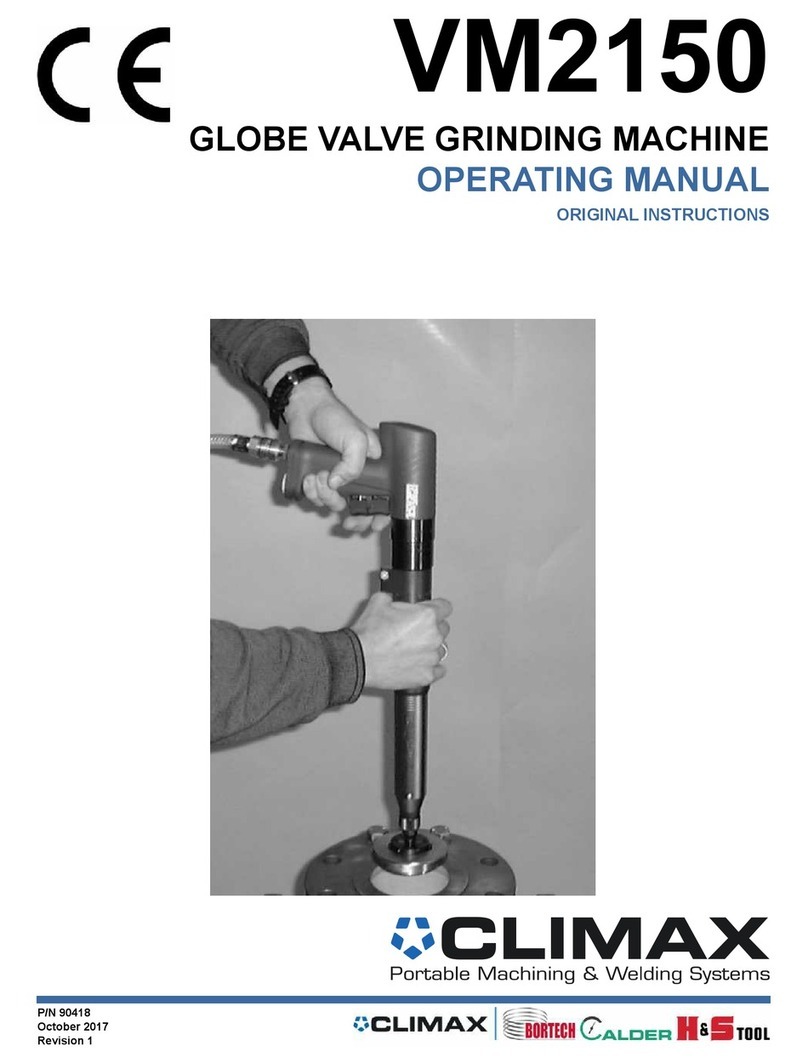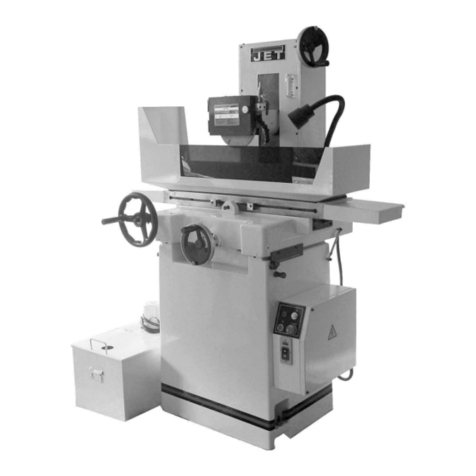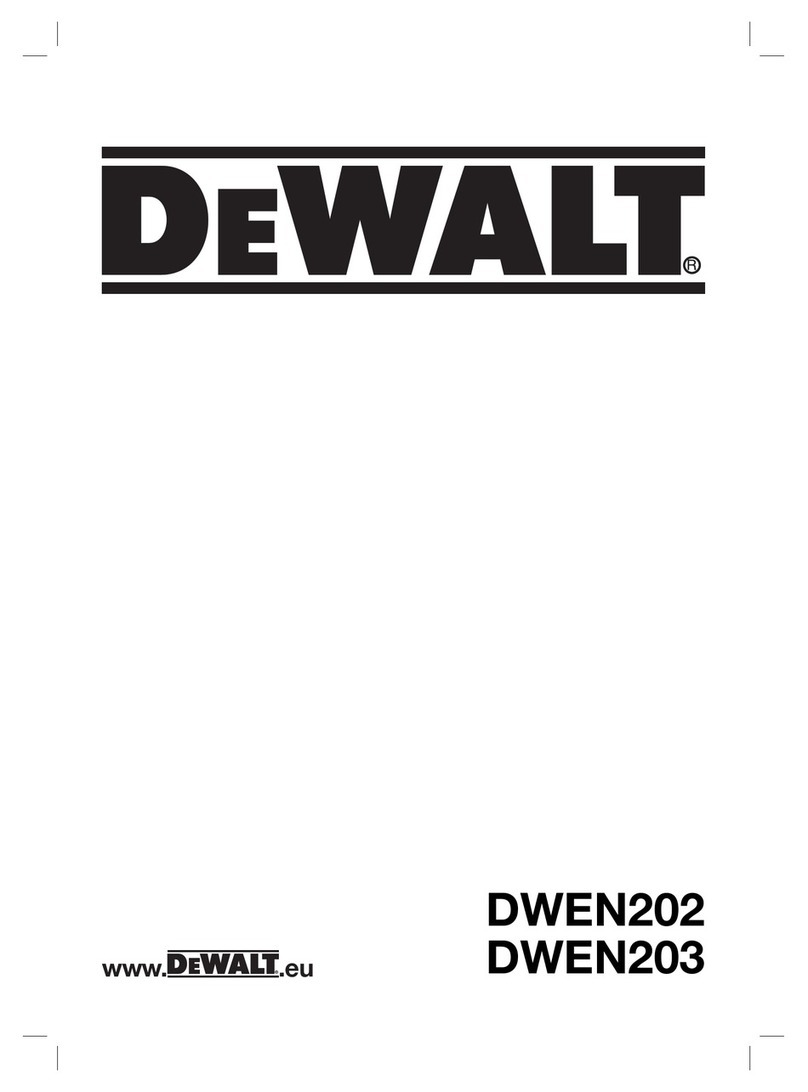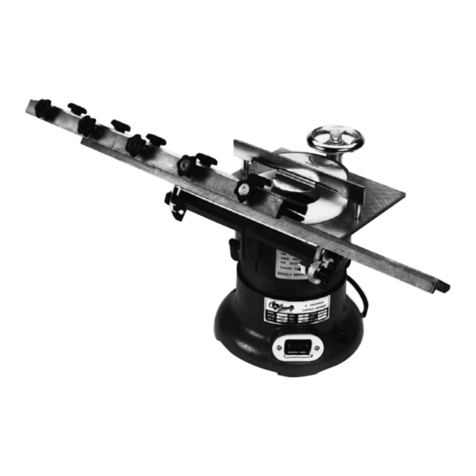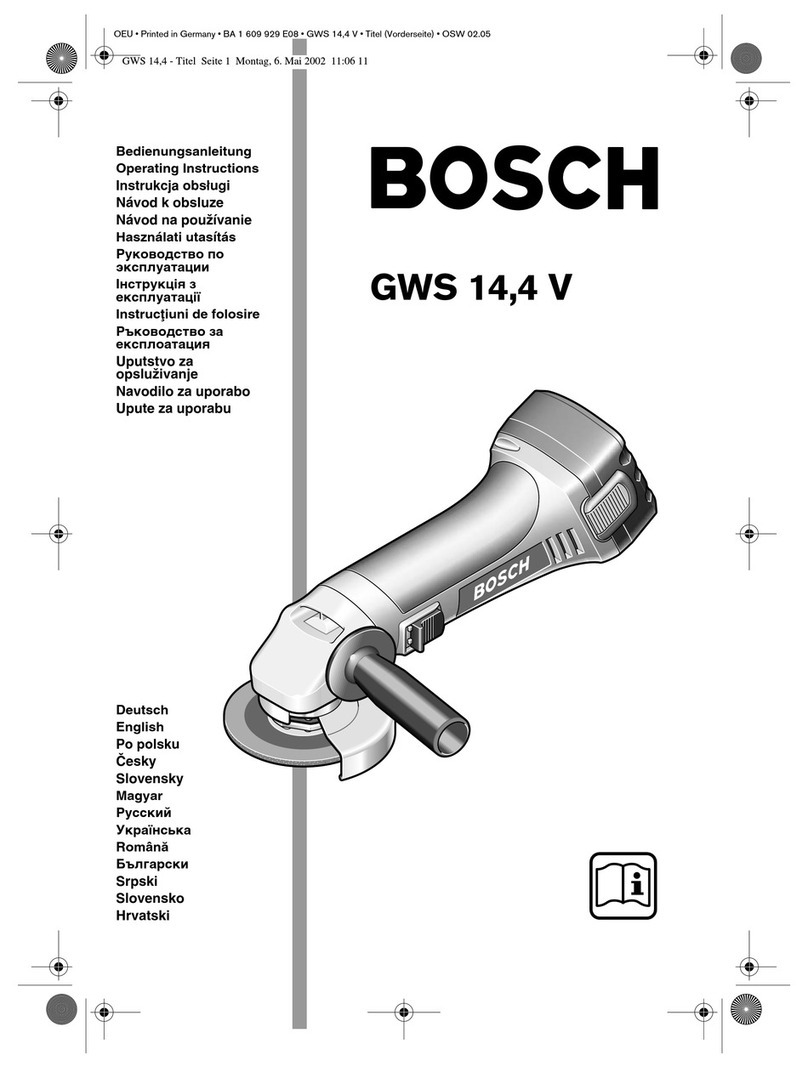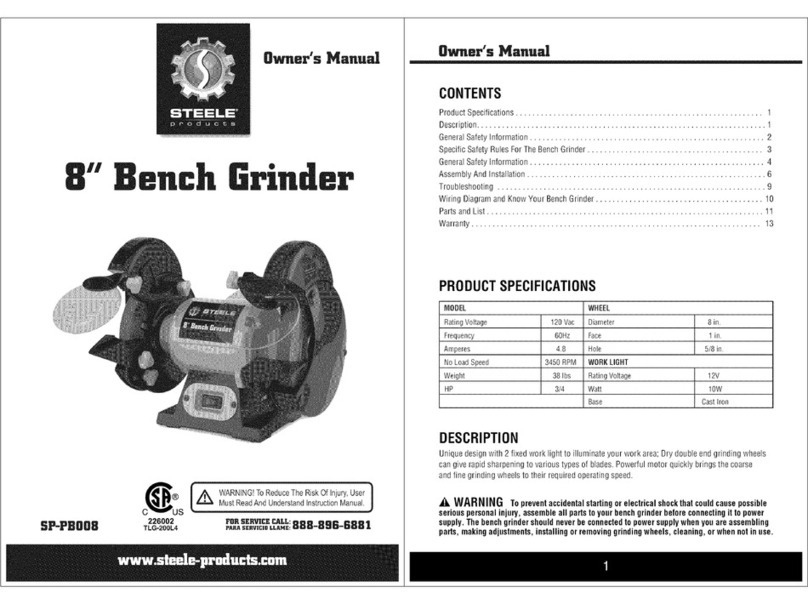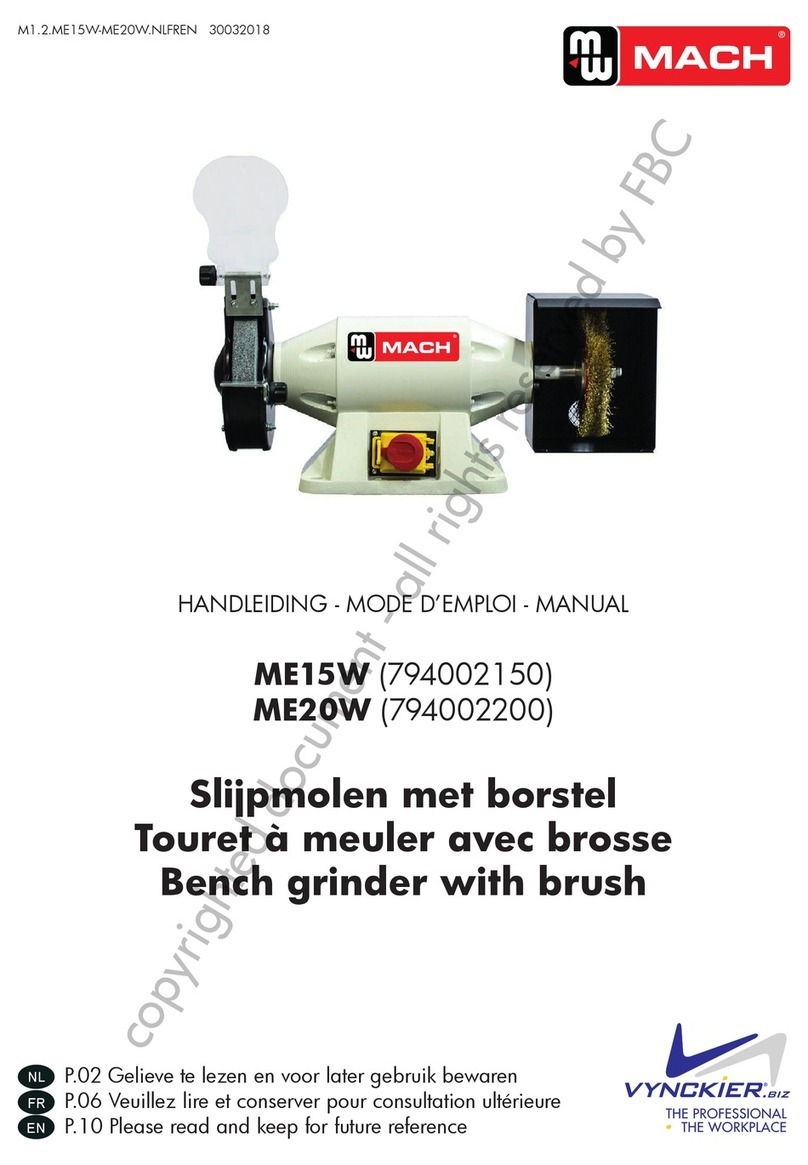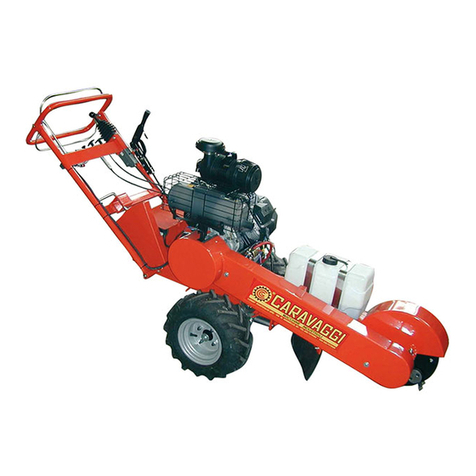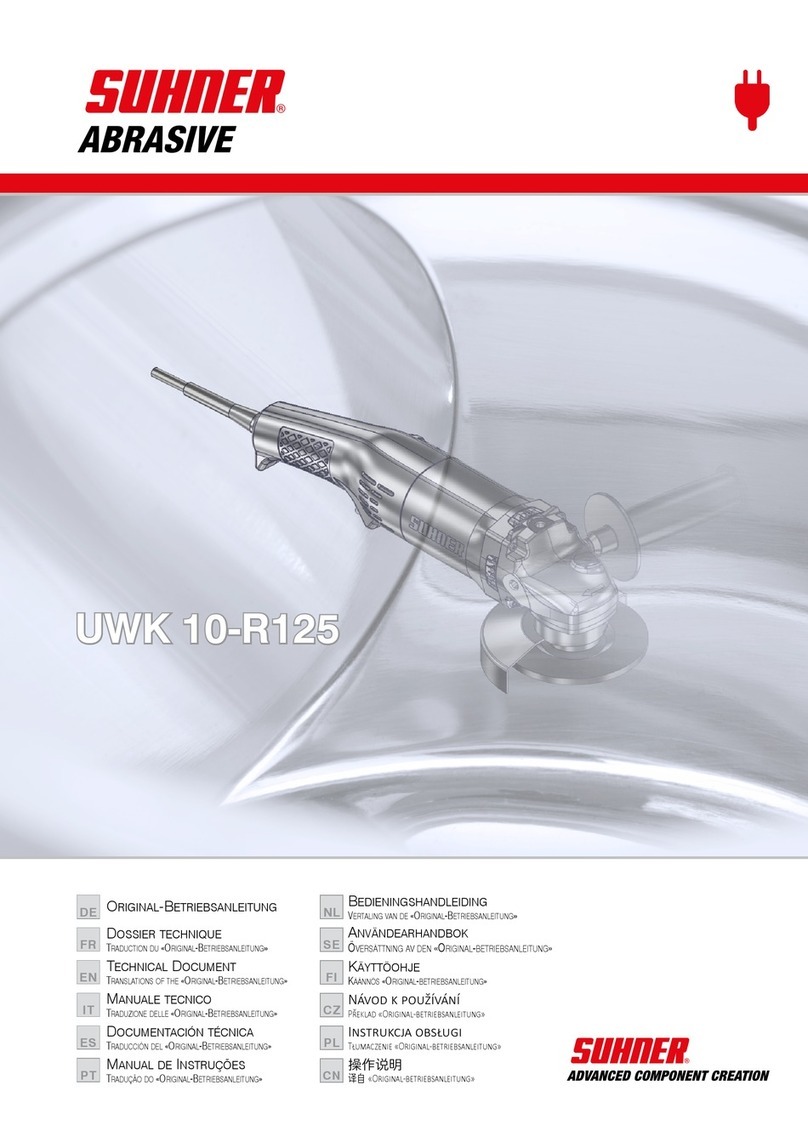
8ENGLISH
Do not use a damaged accessory. Before each
use inspect the accessory such as abrasive
wheels for chips and cracks, backing pad for
cracks, tear or excess wear, wire brush for loose
or cracked wires. If power tool or accessory
is dropped, inspect for damage or install an
undamaged accessory. After inspecting and
installing an accessory, position yourself and
bystanders away from the plane of the rotating
accessory and run the power tool at maximum
no-load speed for one minute. Damaged acces-
8.
Wear personal protective equipment.
Depending on application, use face shield,
safety goggles or safety glasses. As appropri-
ate, wear dust mask, hearing protectors, gloves
and workshop apron capable of stopping small
abrasive or workpiece fragments.-
9.
Keep bystanders a safe distance away from work
area. Anyone entering the work area must wear
personal protective equipment.
10. Hold the power tool by insulated gripping
surfaces only, when performing an operation
where the cutting tool may contact hidden
wiring. Contact with a "live" wire will also make
exposed metal parts of the power tool "live" and
could give the operator an electric shock.
11. Never lay the power tool down until the acces-
sory has come to a complete stop. The spinning
12. Do not run the power tool while carrying it at
your side.
13. Regularly clean the power tool’s air vents. The
motor’s fan will draw the dust inside the housing
and excessive accumulation of powdered metal
14.
materials. Sparks could ignite these materials.
15. Do not use accessories that require liquid
coolants.
Kickback and Related Warnings
-
-
entering into the pinch point can dig into the surface of
operator, depending on direction of the wheel’s move-
1.
position your body and arm to allow you to
resist kickback forces. Always use auxiliary
handle, if provided, for maximum control over
kickback or torque reaction during start-up.
-
2. Never place your hand near the rotating acces-
sory.
3. Do not position your body in the area where
power tool will move if kickback occurs.
to the wheel’s movement at the point of snagging.
4. Use special care when working corners, sharp
edges etc. Avoid bouncing and snagging the
accessory.
5. Do not attach a saw chain woodcarving blade
or toothed saw blade.-
1. Use only wheel types that are recommended
designed for the selected wheel. Wheels for
2.
The grinding surface of centre depressed wheels
must be mounted below the plane of the guard lip.
3.
The guard must be securely attached to the
power tool and positioned for maximum safety,
so the least amount of wheel is exposed towards
the operator. The guard helps to protect the opera-
with wheel and sparks that could ignite clothing.
4.
Wheels must be used only for recommended
applications. For example: do not grind with the
intended for peripheral grinding, side forces applied
5.
of correct size and shape for your selected
wheel.
6. Do not use worn down wheels from larger
power tools. Wheel intended for larger power tool
1. -
sive pressure. Do not attempt to make an
excessive depth of cut. Overstressing the wheel
-

